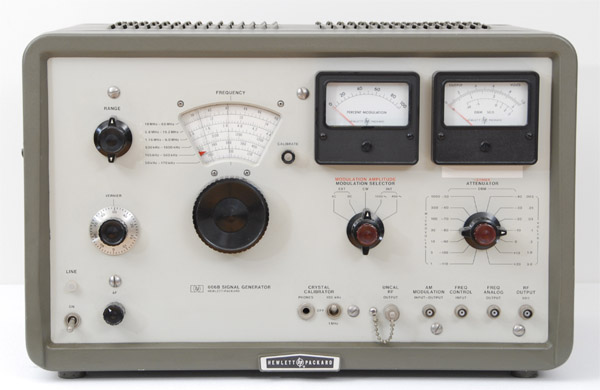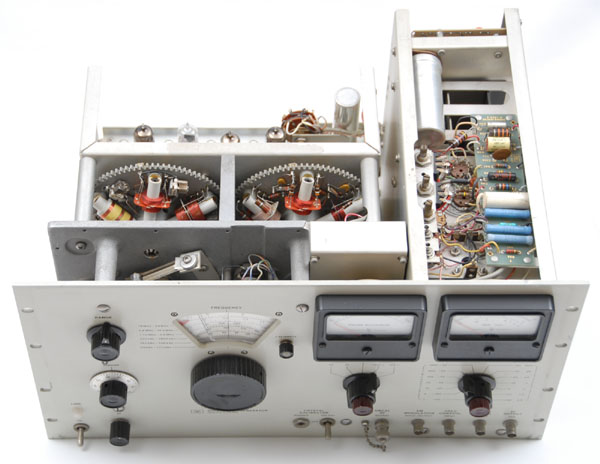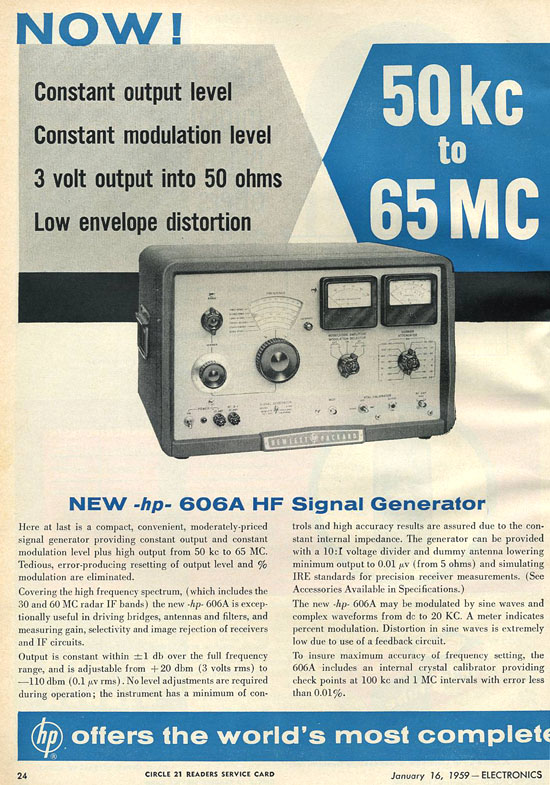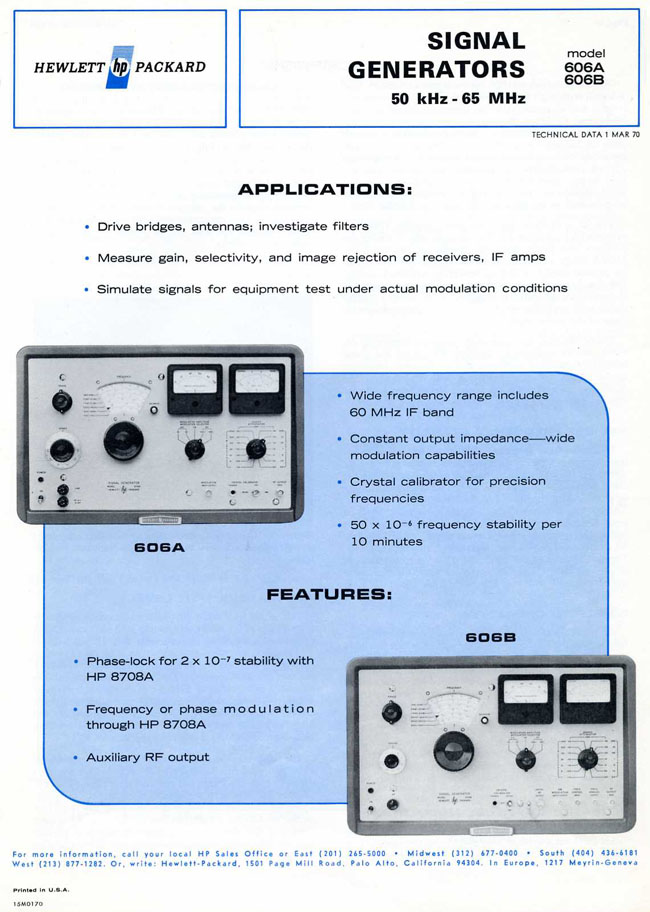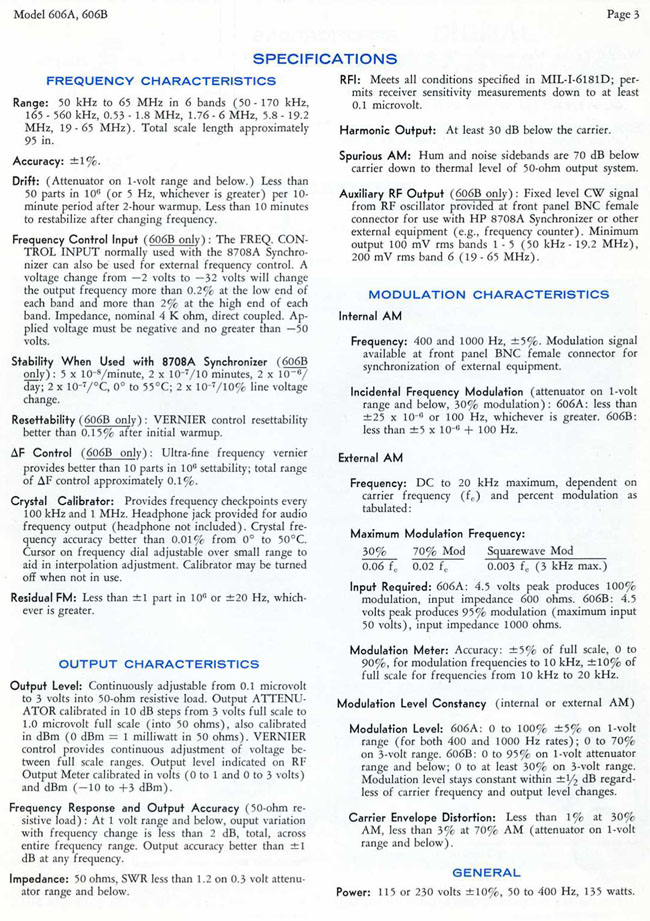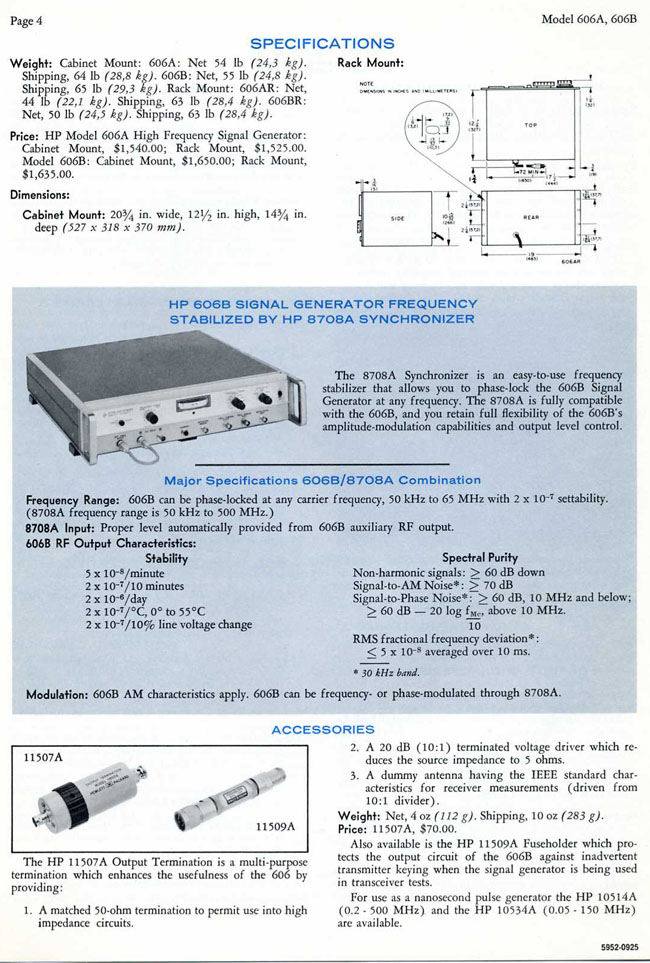HP 606A/B, the Existential Signal Generator
The Signal Generator is a calibrated transmitter. Intended primarily to test system receivers. In the design, test and maintenance of any communication system, radar, satellite, Police radio, or wireless system receiver, there are phases when you need precise simulation signals that behave like the transmitter. Signal generators give you tunable signals, AM or FM or pulsed or digital modulation, and a very precise settable output level WAY down to -127 dBm, which reveals just how sensitive the receiver is.
In all those decades of early signal generators in the 1940s, 50s and 60s, some of which used Klystrons for the source, some like the HP 608 and 612, used tunable circuits with tunable power amplifiers for the output stage, they weren't ideal but they were pretty good. As you tuned frequency, set on channel, the frequency drifted a little, the output power at each new frequency was different, meaning you had to set the output power each time. And the modulation simulations were not so perfect.
And then, in 1959, along came Art Fong's HP 606A. It wasn't time for semiconductors yet, but it was time for an almost perfect design. Art chose to use capacitance tuned oscillators and power amplifiers. The vacuum tube oscillators gave LARGE voltage tank voltages, meaning a very low single sideband phase noise on the carrier. The drift was low but the HP 606B/8708A furnished a phase locking means to stop drift. The power amplifier had feedback on the power monitor, so you could just tune anywhere, switch frequency bands, and the power output remained rock solid.
The modulation function on the power amplifier had an additional high performance characteristic. It was a highly-linear detector at the output, which was part of the AM feedback loop, and forced the modulation envelope to match EXACTLY the input modulation audio. All the way up to 100% modulation. Wow. Now THAT was a signal generator. The customers LOVED that generator for its convenience and accuracy.
Future HP generators like the HP 8640 came along as semiconductors took over, gave us internal phase locking, microwave generators with YIG-tuned microwave transistors, phase-locked, digital synthesis, nanosecond pulsing, and digital (I/Q) modulations to match the amazing new communications and radar systems technology. But Art Fong's generators took our RF, VHF and microwave instrumentation through several decades of advances in our technology world, from the 1940s to the 70s.




